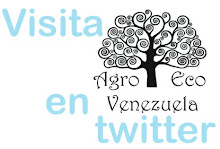domingo, 25 de agosto de 2019
viernes, 23 de agosto de 2019
Model of an insect outbreak
Steven Strogatz
.
Steven Strogatz
.
miércoles, 21 de agosto de 2019
lunes, 19 de agosto de 2019
viernes, 16 de agosto de 2019
.
Les semences libres de Nicolas Supiot, le paysan boulanger
Les semences libres de Nicolas Supiot, le paysan boulanger
jueves, 15 de agosto de 2019
.
"And so I go to the woods. As I go in under the trees, dependably, almost at once, and by nothing I do, things fall into place. I enter an order that does not exist outside, in the human spaces"
Wendell Berry
.
miércoles, 14 de agosto de 2019
lunes, 12 de agosto de 2019
viernes, 9 de agosto de 2019
Direct and indirect effects of urban gardening on aboveground and belowground diversity influencing soil multifunctionality
Tresch et al., 2019
https://go.nature.com/2JlaO9M
.
Tresch et al., 2019
Urban gardens are popular green spaces that have the potential to
provide essential ecosystem services, support human well-being, and at
the same time foster biodiversity in cities. We investigated the impact
of gardening activities on five soil functions and the relationship
between plant (600 spp.) and soil fauna (earthworms: 18 spp.,
springtails: 39 spp.) in 85 urban gardens (170 sites) across the city of
Zurich (Switzerland). Our results suggest that high plant diversity in
gardens had a positive effect on soil fauna and soil multifunctionality,
and that garden management intensity decreased plant diversity. Indices
of biological activity in soil, such as organic and microbial carbon
and bacterial abundance, showed a direct positive effect on soil
multifunctionality. Soil moisture and disturbance, driven by watering
and tilling, were the driving forces structuring plant and soil fauna
communities. Plant indicator values proved useful to assess soil fauna
community structure, even in anthropogenic plant assemblages. We
conclude that to enhance soil functions, gardeners should increase plant
diversity, and lower management intensity. Soil protective management
practices, such as applying compost, mulch or avoiding soil tilling,
should be included in urban green space planning to improve urban
biodiversity and nature’s contribution to people.
Expected positive relationships are given in black and negative ones
in red, grey arrows represent both positive and negative effects. We
expected that annual vegetables (arrows 1a) will negatively influence plant and soil fauna as well as soil multifunctionality compared to perennial grass
sites, while perennial flowers (arrows 1b) will show positive effects.
Management intensity (arrows 2) is expected to negatively affect plant
diversity and soil fauna as well as soil multifunctionality. Higher
plant diversity (arrows 3) is hypothesised to have a positive effect on
soil fauna and soil multifunctionality. Soil fauna diversity and biomass
(arrows 4a & 4b) are also expected to have a positive effect on
soil multifunctionality. Urbanisation (arrows 5) might have a positive
or negative effect on soil fauna and soil multifunctionality.
https://go.nature.com/2JlaO9M
.
miércoles, 7 de agosto de 2019
lunes, 5 de agosto de 2019
.
"Todo el que disfruta cree que lo que importa del árbol es el fruto, cuando en realidad es la semilla.
He aquí la diferencia entre los que piensan y los que solo disfrutan."
Friedrich Nietzsche.
.
"Todo el que disfruta cree que lo que importa del árbol es el fruto, cuando en realidad es la semilla.
He aquí la diferencia entre los que piensan y los que solo disfrutan."
Friedrich Nietzsche.
.
domingo, 4 de agosto de 2019
Plant domestication disrupts biodiversity effects across major crop types
Chacón‐Labella et al., 2019.
https://onlinelibrary.wiley.com/doi/abs/10.1111/ele.13336
.
Chacón‐Labella et al., 2019.
Plant diversity fosters productivity in natural ecosystems. Biodiversity
effects might increase agricultural yields at no cost in additional
inputs. However, the effects of diversity on crop assemblages are
inconsistent, probably because crops and wild plants differ in a range
of traits relevant to plant–plant interactions. We tested whether
domestication has changed the potential of crop mixtures to over‐yield
by comparing the performance and traits of major crop species and those
of their wild progenitors under varying levels of diversity. We found
stronger biodiversity effects in mixtures of wild progenitors, due to
larger selection effects. Variation in selection effects was partly
explained by within‐mixture differences in leaf size. Our results
indicate that domestication might disrupt the ability of crops to
benefit from diverse neighbourhoods via reduced trait variance.
These results highlight potential limitations of current crop mixtures
to over‐yield and the potential of breeding to re‐establish variance and
increase mixture performance.
https://onlinelibrary.wiley.com/doi/abs/10.1111/ele.13336
.
viernes, 2 de agosto de 2019
.
https://bit.ly/2RPmy7a
.
Changes in diet following the rise of farming in Europe and Asia during
the Neolithic period resulted in humans retaining overbites into
adulthood, which led in turn to language diversification.
.
.https://bit.ly/2RPmy7a
.
jueves, 1 de agosto de 2019
Suscribirse a:
Comentarios (Atom)
























